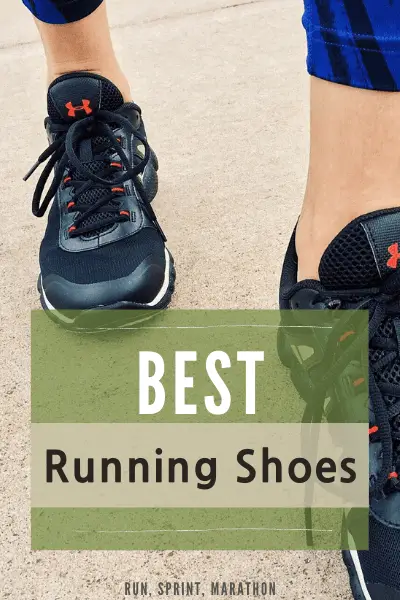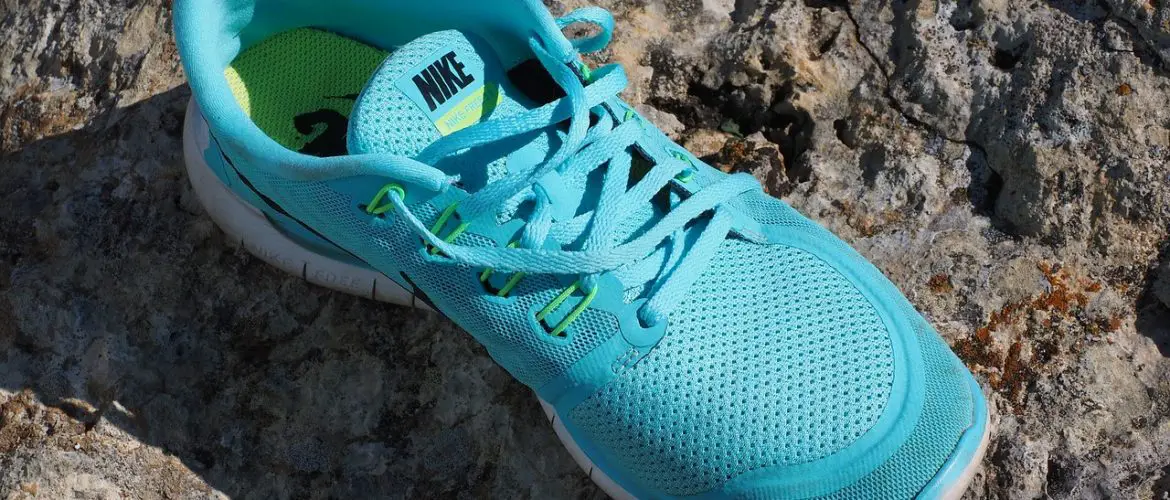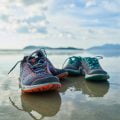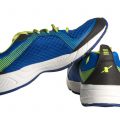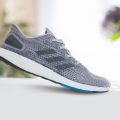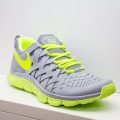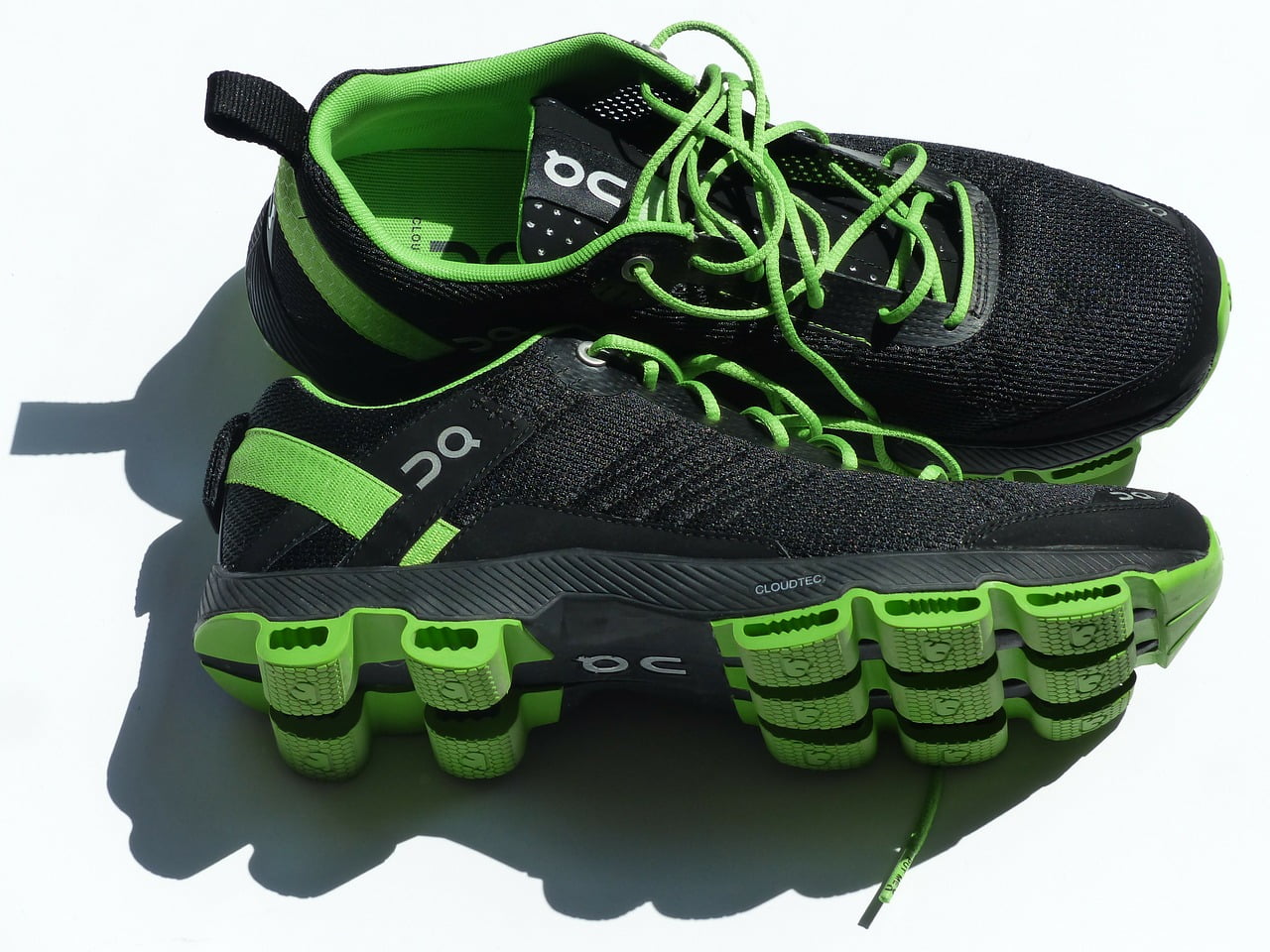Finding the perfect running shoes for you can be a bit of a challenge, unless you are the type to just throw your money at something expensive and hope. But you’re not one of those people, the chances are that you have stumbled onto this article because you were looking for the best running shoes out there, and wanted to make the right decision for your needs.
You see picking the perfect running shoe is like finding the perfect partner. They need to suit you personally, and it doesn’t matter what anyone else thinks. If you are an overweight person looking to start running for the very first time, then you are not going to need the exact same running shoes as an Olympic marathon runner are you?
There are also vast differences between people when it comes to running technique, some people will need shoes that can correct over pronation, while others will require shoes that can correct supination. If you don’t know what these terms mean, then don’t worry you’ll learn all about them in this article.
You see, the running shoe industry has got a problem. Their shoes are filled with so much jargon that 90% of their customers have no idea what they are talking about! Words like midsole, medial post, EVA Foam, durability and traction are thrown around and only a small amount of people know what they mean. Well actually it’s not the running shoe industry that has the problem, it works to their advantage to use words that sound impressive but mean nothing. It’s the customers who suffer.
So this article is going to go through what type of runner you are and how to test it. What shoes you should get to suit your goals, what some of the common terms used to sell shoes mean, and what judging criteria you should use when picking a shoe. We’ll keep things simple (which suits us a LOT) and we’ll also mention ten of the best running shoes out there, then you can use your newfound shoe knowledge to decide which one suits your needs.
What type of runner are you?
“A tired one”
Haha great response hypothetical person, but the question is about what your running style is. You see there are three common runners out there. The neutral runner, the overpronators, and the supinator. We’ll take a quick look at each of these now.
- Neutral Pronator– This is basically the best one to have. If you are a neutral Pronator you will run with your heel striking the ground then your rolls forward and your toes then touch the ground. This is the classic heel to toe technique which is perfect for long distance running.
- Over Pronator– Overpronation used to be called flat footedness which means that when your foot hits the ground there is no natural arch created, and the whole sole of your foot touches the ground. This reduces shock impact and can lead to shin splints, knee, or ankle injuries.
- Supinator– Also known as under Pronator. This is the opposite problem to the overpronators, when your foot hits the floor, there isn’t enough of it in contact with the floor. Your foot favours the outside of the foot, as such there is little to no shock absorption.
Testing your foot type
There are all sorts of fancy tests that you can perform, using video analysis, biomechanical assessments, or running coaches. Alternatively you can just walk barefoot on some concrete with wet feet. This is known as the wet foot test, and it is quite simple. Find yourself a flat surface such as concrete where your footprint will show up (if you have access to snow or wet sand this can also work, though not quite as well).
Get your feet wet and walk along the concrete naturally, if you have enough concrete to do so then you can also run. Afterwards take a photo of your footprints. If your footprint looks like the letter ‘P’ then you are a neutral Pronator (go slap yourself on the back for being so genetically gifted). If your foot looks like a large blob then you are an over Pronator. If your footprint is split into two parts and looks like a semi colon (which looks like this ; ) then you are a supinator.
Finding the right shoes for your foot type
Once you know your foot type you should realise that there isn’t much that you can do to change it, a very overweight person may find that they are flat footed because of their size, and losing weight may then help, but for the most part you are stuck with your feet the way they are. What you can do though is find shoes that suit your needs.
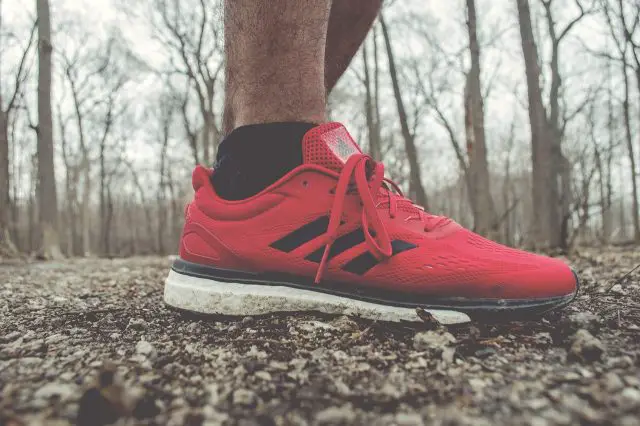
- Neutral Pronator – You can pretty much buy whatever shoes you want, if you prefer a more cushioned ride then go for that, or you can go for shoes that are very light in weight if you are looking to run very fast.
- Over Pronator – You will need to find shoes that are very well supported, have a lot of stability, and lots of cushioning. You will also want shoes that have a firm medial post for support (we’ll explain what this is later).
- Supinator – You need very flexible shoes that contain a LOT of cushioning, particularly along the outside of the sole (where your foot naturally places the most emphasis) and around the heel.
Finding shoes to fit your goal
But it’s not just about your foot type, there are other factors that affect what shoes you want. Budget, taste in fashion, and the conditions that you are running in are all important. But what is most important is deciding what type of running you want to focus on. Do you want to run marathons? 100m sprints? What about middle distances? Or Obstacle races like Tough Mudder and Spartan Race?
Quite a few shoes are made to excel at a specific distance, while some are made for any occasion but won’t excel at any. In this section we will give you a rough idea of what to look for in a shoe when you know what you want to achieve.
- Long Distance Running – Marathons, Half Marathons, Triathlons, you get the idea. Long runs which require a lot of training. The first thing you should be looking for is durability, you need these shoes to last you through miles 20 and over. Then you should look at cushioning. Breathability is also important.
- Short Distance Running – Any run that is under 1500m. When it comes down to running short distances you want to be travelling as fast as possible. This means that the shoe should be very light. If you are running on a track then you should be looking at shoes with spikes, but that’s a whole other article. Stability is very important, and good cushioning – provided it doesn’t affect the weight of the shoe.
- Beginners – People who have never run before. Concentrate on getting the right shoe for your foot type, but other than that it is all about comfort, and about getting your natural running technique right. A lot of shoes use rockers to emphasise that heel to toe technique.
- Trail Running – Cross Country Runs, dirt tracks, wooded runs, and obstacle courses. Trail running can be a lot of fun, but it is very different to road or track running. This is because you cannot count on the terrain to be flat. It is constantly changing and may involve climbing, jumping, and slippery surfaces. You want shoes that have a lot of stability, a lot of durability, but most of all you want them to have excellent traction.
Common terms
As we mentioned earlier there is a lot of technical jargon that is thrown about when it comes to running shoes. So this section will be a glossary of common terms, if one of our reviews uses a word that you might not have heard of then check this section for an explanation.
Upper – The upper is (obviously) the upper part of the shoe. This is where the laces are, the tongue, the mesh, it’s basically the cover of your shoe. The upper works to keep your foot inside the shoe.
Midsole – The midsole is held between the upper and the outsole (bottom) of your shoe. This is where the majority of the cushioning can be found. Usually this cushioning is made from foam. The midsole also contributes to the stability of the shoe.
Outsole – This is the bottom of the shoe and it is usually made from rubber, this is where you will find the grip that keeps your feet from slipping.
Overlay – This is a term for anything that has been attached to the upper, and is often used to describe leather additions that are there to increase stability and structure. Some shoes use overlays to provide specific benefits, but for the most part you don’t need to worry about them.
Tread – These are the grips that are situated on your outsole, they are raised up from the outsole and have a couple of crucial uses. The raised treads can improve grip, improve traction, and improve running gait.
Traction – This is just another word for grip really, how your shoe grips the surface as you run. Nike use a four-part formula to assess the traction of their shoes. This is: Surface type, design pattern, surface ratio, and rubber composition.
Heel Counter – This is situated at the back of the shoe and its function is to keep the heel locked firmly in place. A good heel counter will keep your heel rigid while you run, and supported throughout.
Medial Post – This can be found within the midsole and is made from EVA. This makes it denser than the rest of the midsole and its function is to provide stability. The bigger and the denser the medial post is, the more stability the shoe provides. When a shoe has a medial post it will be known as dual-density as the midsole will have two different densities.
EVA – Also known as Ethyl vinyl acetate, EVA is a type of foam that is commonly used in running shoes. EVA is a type of closed cell foam, which is very dense. Other forms of closed cell foam are Polyurethane (PU), Styrene butadiene rubber (SBR), latex, and Neoprene. You can also get open cell foam which is used in shoes in the collars of shoes.
Rockers – Rocker bottomed shoes are shoes which use a very thick soles, and have a slightly rounded heel. They are designed to promote a perfect heel to toe running gait. They became infamous when Sketchers brought out the Shape Ups, which were very rounded. But many running shoes have less exaggerated versions of rockers now, which can really help with improving running.
Judging Criteria
Now that you have a bit of an idea about some of the industry terms, we thought it might be a good idea for you to understand what judging criteria we are going to use for each of the ten best running shoes on our list. We’ll give a quick breakdown of the six factors that we will be judging, these are; stability, durability, comfort, breathability, price, and style.
Stability – Stability running shoes are those that are aimed at over pronators, but all shoes have some form of stability. This is a measure of how rigid the shoe keeps your foot during a run. Overpronation can lead to a lot of instability while running, which is why so many people who are unaware of their foot type can get injured. All shoes should have some form of stability, but if one of the shoes on our list has a low stability score, then that doesn’t mean they’re a bad shoe, it just means that they would not suit someone who over pronates.
Durability – This is a measure of how well a shoe will last during a very long race, a bad pair of shoes may become uncomfortable and may weaken as the race continues, while a durable shoe will be unaffected. This is also a measure of how long the shoe will last you long term. Like if you ran 200 miles per week, a very durable shoe will last you years, while a shoe that isn’t durable will last you weeks. If you are only planning on running short distances, then durability may not be such an important factor.
Comfort – This is a measure of how well cushioned the shoe is, how well it fits, how snug the upper is, and how well the collar fits against your ankle. Again, the longer you run, the more important comfort is. Not all shoes should be heavily cushioned though, if you are sprinting, or running short distances you want a very light weight shoe. But that shoe can still be comfortable if it is well made. Well cushioned shoes are often perfect for underpronators, so if you are flat footed, then this is the most important factor to look out for.
Breathability – Most shoes have a mesh upper, this is the part of your shoe that has all of those small holes in it, usually around the toes. Some shoes are much more breathable than others. This doesn’t necessarily make them better shoes though. Sometimes too much breathability is a bad thing. Particularly if you are running in very cold conditions. So if one of the shoes has a low breathability score that doesn’t necessarily make it a bad shoe, it just means that this shoe would suit colder conditions.
Price – This isn’t necessarily how expensive a shoe is. Running shoes can vary in price massively, but that isn’t always a good indicator of how effective the shoe is. You can have a very expensive set of running shoes that last you 10 years, or you can have a $20 pair of shoes that fall apart midway through your first race. Long term which is a better price? The first one! We judge the shoes by their value for money, rather than their actual price (though this is a factor).
Style – This last factor is the most difficult to judge. Style is the only thing on this list that is subjective. Some people will love the design of a shoe while others will absolutely detest it. Some shoes will look great at the time, but five years down the line they look horrible. Some shoes that were ditched as being unfashionable, will have a sudden resurgence 20 years later (we’re looking at you converse). All we can do is give the shoes a score out of 5 based on our own opinions and you can agree or disagree. This factor should be seen as the least important one.
10 Best Running Shoes
| Name | Stability | Durability | Comfort | Breathability | Price | Style | Total |
|---|---|---|---|---|---|---|---|
| Puma Ignite EvoKnit | 3/5 | 4/5 | 4/5 | 2/5 | 4/5 | 2/5 | 19 |
| ON Cloudflow | 3/5 | 5/5 | 4/5 | 4/5 | 2/5 | 2/5 | 20 |
| Merrell Bare Access Arc 4 | 3/5 | 5/5 | 3/5 | 3/5 | 4/5 | 3/5 | 21 |
| Under Armour Threadborne Slingflex | 3/5 | 3/5 | 4/5 | 4/5 | 4/5 | 3/5 | 21 |
| Adidas Ultraboost Uncaged Parley | 4/5 | 4/5 | 4/5 | 4/5 | 1/5 | 5/5 | 22 |
| Asics Dynaflyte 2 | 3/5 | 4/5 | 4/5 | 4/5 | 3/5 | 3/5 | 21 |
| Nike Zoom Vomero 12 | 4/5 | 3/5 | 4/5 | 3/5 | 4/5 | 2/5 | 20 |
| Skechers GOrun 5 | 3/5 | 3/5 | 4/5 | 4/5 | 4/5 | 1/5 | 19 |
| Mizuno Wave Catalyst | 4/5 | 3/5 | 3/5 | 3/5 | 5/5 | 2/5 | 20 |
| Altra Lone Peak 3.0 | 4/5 | 5/5 | 3/5 | 2/5 | 3/5 | 1/5 | 18 |
Best Running Shoes #1: Puma Ignite EvoKnit
Everyone is raving about how stylish the Puma Ignite EvoKnit is, talking about how the shoe harks back to a bygone era when high top running shoes were all the rage. We’re not so sure, the colour scheme is poor, and the fabric upper looks weird. But aesthetically pleasing or not, this shoe is excellent. The price is very reasonable, and is about average for a running shoe. It is not particularly breathable but would be perfect for cold weather running.
The EVA foam in the midsole makes this shoe extremely comfortable, and the upper benefits from being knitted and will have a sock-like feel when you’re putting them on. The shoe is also surprisingly durable (even if it doesn’t look durable), meaning that it is perfect for long runs. The shoe benefits the neutral runner, which means it only has average stability, if you are a big overpronator you might want a different shoe, but mild overpronators should be fine wearing it.
Best Running Shoes #2: ON Cloudflow
Our next shoe is the ON Cloudflow, this is an excellent light weight running shoe that is perfect for faster running and shorter distances. The main benefit of this shoe is its flexibility which allows you to easily get up onto your toes when required and sprint that last 100 metres to victory. While this is primarily aimed at short and middle distance racing, there have been reports of people using it for longer distances too, with half and even full marathon runners using them.
The most striking part of these shoes is definitely the outsole, with small bright yellow “clouds” attached to the bottom of the shoe. These are designed to increase comfort, and to help reuse energy to power you through races. The clouds also help to promote the proper heel to toe running technique, working as small rockers and helping improve your running economy.
The shoes have great traction and are also very breathable, making them perfect for pounding the pavement in hot weather. Style wise they are pretty average, some people may enjoy the colour scheme, and the clouds on the bottom of the shoe definitely stand out, but it doesn’t really stand out as the height of fashion!
Best Running Shoes #3: Merrell Bare Access Arc 4
A great budget choice to look at now, the Merrell Bare Access Arc 4 is a really great option for anyone who wants to spend their money wisely. It’s also one of the most durable running shoes on this list, which makes it perfect for long distance running, and it also makes it incredible value for money. With some love and attention you could wear these shoes day in day out for over a year.
The durability mostly comes from the vibram outsole technology, this massively improves traction but it can also reduce wear and tear over the years. The upper is surprisingly breathable, but again concentrates on improving the overall durability of the shoe. One downside is that the shoe does not suit over pronators too much, there just isn’t enough stability, nor is the arch support anything special.
Aesthetically the shoe is a step up from the previous two, but isn’t setting the world alight. A very unexciting and safe colour scheme with a neat design. This shoe is perfect for people who want to run long distances, without spending a fortune, while still enjoying a comfortable ride.
Best Running Shoes #4: Under Armour Threadborne Slingflex
The Threadborne Slingflex (what a crazy name) by Under Armour is an excellent running shoe that is suitable for daily running. It is a decent price, is suitable for neutral runners, has a lot of breathability, and is well cushioned. The price varies between sizes, but is on the whole a bargain for a running shoe as good as this.
The outsole is probably the best part of this shoe, it’s made from solid rubber and is designed to mimic the foot. There is extra cushioning placed at strategic places, such as around the balls of your feet. The upper is made of threadborne technology (hence the name) which is perfect for improved breathability, it also creates a sock like fit, and really helps to increase comfort.
The midsole is made up of dual density foam, which really helps improve stability (though not enough to suit overpronators). There is still a decent amount of cushioning though and this will help neutral runners and supinators to run well over long distances. Style wise, the shoe has some decent colour combinations available, and the midsole cushioning looks quite nice.
Best Running Shoes #5: Adidas Performance Ultraboost Uncaged Parley
One of the coolest things about these shoes is that they are part made by recycled materials, the yarn that covers the upper is made up from recycled ocean plastic. Waste that has been found in the oceans or washed up along the beaches. This provides two benefits it prevents the creation of more plastic, and it removes plastic from the seas. The second coolest thing about these shoes is that they are amazing!
The Ultraboost Uncaged shoes from Adidas look stunning, they are skeek, fashionable, will go with anything (except formal wear … obviously) and the colour schemes are beautiful. The white version is probably the best, though it will require a lot of cleaning if you’re running in them regularly, but out favourite is the baby blue colour.
The shoes are ridiculously responsive, when you run in them you’ll be getting all the energy you put in thrown back at you, saving you lots of effort over long distances. The torsion system does a lot to improve stability, though the shoes are still recommended for neutral runners. They use Continental tires’ rubber to improve traction in the outsole, this also massively improves durability.
The upper is made from Primeknit which will really make your feet feel snug and cushioned throughout a run. The only downside is the price, these are NOT cheap to buy. They are high quality, and well worth the money, but be aware that you’ll find fewer shoes that cost more. Definitely not for those of us on modest budgets, unless you really feel like a treat.
Best Running Shoes #6: Asics DynaFlyte 2
The DynaFlyte 2 is a great daily running shoe that suits both neutral runners and supinators. It is very light in weight (261g) but manages to fit a lot of cushioning in. If you’re looking for a comfy shoe that can last you through multiple long runs per week, then this is the one for you. The shoe has decent traction too.
The biggest draw for this shoe (other than the cushioning and light weight) would be the breathability. It’s superb. The mesh envelopes most of the upper and it really helps ventilate your feet while you’re out running, without making the shoes too cold in freezing temperatures.
Design wise the shoes look quite nice, the colour schemes are a little dull, but well chosen. No clashing or garish colours to worry about. The flytefoam cushioning is well coloured to match the shoes, and helps to improve the shape of the shoes as an added extra.
Best Running Shoes #7: Nike Zoom Vomero 12
One of the good things about this shoe is that it suits all types of foot. There’s a lot of flexibility, some stability in the midsole, and loads of cushioning. The shoes have a comfort-fit collar which helps to cushion your ankle as you run, they also use Nike Zoom Air Units in the heel, which can massively improve responsiveness during a run.
The midsole uses a Lunar core which can really help to improve cushioning and stability. The shoes look pretty nice too, with the blue and orange colour combination being surprisingly aesthetic. The black and white combo is also good, but is standard Nike so may not be as interesting. The upper is also amazingly comfortable, and very soft.
Overall this is the perfect shoe for anyone who wants to run a lot of miles while staying as cushioned and comfortable as possible. At the end of the day you know what you’re getting with a Nike shoe, high quality, a decent price, and a lot of experience from the manufacturer.
Best Running Shoes #8: Skechers GoRun 5
You can’t say that the GoRun 5’s by Skechers are attractive looking shoes, in fact they are the least stylish shoes on this list. The colour scheme is awful, and they have these quick-fit heels which (although very effective) make the shoes look ridiculous. But if you’re looking for an out and out lightweight fast running shoe, then these are the ones for you. It’s almost as if the designers decided to completely ignore fashion, in the pursuit of the ultimate runners’ shoe.
The cushioning is great, but doesn’t add too much to the overall weight of the shoe (just 213g) they have added an excellent upper which fits your foot like a glove, and is surprisingly breathable. The quick-fit heels are awesome for putting the shoes on as fast as possible (perfect for triathlons) and they are a very fair price.
Get these shoes if you have a race coming up, or plan to do a lot of speed work for a marathon or half marathon. They won’t let you down.
Best Running Shoes #9: Mizuno Wave Catalyst 2
The first proper stability shoe on this list, making It perfect for over pronators. It’s also fine for neutral and supinated runners, thanks to an excellent cushioning system. The shoe is also … wait for it … vegan friendly. It contains no leather whatsoever, this is actually quite common but they had it down in their marketing spiel and we thought it was quite amusing.
The shoe has a breathable air mesh with 3D reflectivity, it also has ventilation in the forefoot. This will really help you keep your feet cool during long runs. The shoe has an excellent midsole which are both responsive (giving you a lot of extra energy during a run) and really help improve the durability.
They don’t look great aesthetically, only okay. But they are a great price, are perfect for medium and long distance runs, are light enough to also be decent for speed work, and they are durable. A really good all round pair of running shoes.
Best Running Shoes #10: Altra Loan Peak 3.0
The final shoes that we are looking at are the Altra Loan Peak 3.0 running shoes. They are trail shoes, and are therefore suited for cross country races, obstacle courses, or trail running. You might have noticed that they are the lowest rated shoes on this list, but this is mostly due to them looking ugly and being quite expensive. They also aren’t too breathable.
But this is unfair, because the shoes are designed for trail running, meaning that they aren’t supposed to look nice. They’re going to be running through mud and water, they are going to be scuffed up by rocks, twigs, obstacles, and running water. They can’t be too breathable otherwise they’d become waterlogged.
What you need to know about these shoes is that they are light weight, incredibly durable, stable, and they have amazing traction. If you are looking for a shoe to wear for your next obstacle race, or trail run, then these are the shoes to buy. The midsole foam is a huge bonus, it really adds to the durability, but also helps keep your feet very cushioned while remaining light in weight. The traction on the outsoles is also a huge benefit. You’ll feel confident on even the most uneven terrain.
If you’re running on roads, worry about fashion, and have a modest budget then avoid these shoes, but if you want the best trail running around, then get yourself some Altra Loan Peak 3.0s.
Final Thoughts
We’ve given you ten of the best running shoes that are currently out there (in our opinion). Some of these shoes will suit you perfectly, while others not so much. Don’t just grab the highest rated shoes on this list (Adidas Ultraboosts) because they may not suit your specific needs. Check out each one, and find the perfect shoe for you.
